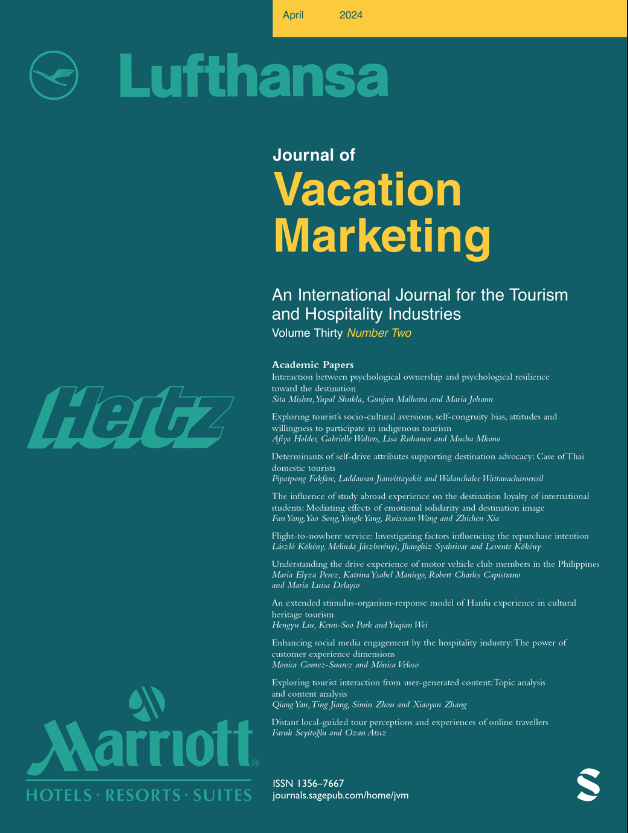伊朗的目的地形象,安全保障的增量分析
IF 4.5
3区 管理学
Q1 BUSINESS
引用次数: 1
摘要
安全保障(S&S)可以极大地促进游客对特定目的地的感知和决策。从这个角度来看,像伊朗这样的国家承受着后果,因为它们被正式引入为不安全和不安全的目的地。本研究试图分析去伊朗旅游前后游客感知中的S&S功能。为此,通过自我管理问卷收集数据,然后通过结构方程建模进行分析。与最初的假设相反,结果显示,与其他因素相比,S&S并不是最重要的,因为游客对伊朗目的地形象的看法是现实的。此外,研究结果表明,标准与规范是政府间政治挑战的反映,超越了传统问题。研究结果是基于那些已经去过伊朗的人的看法,但那些忽视伊朗作为目的地的游客仍然偷偷摸摸。因此,由于限制性的微环境,像伊朗这样的国家可能会失去旅游市场的份额。因此,目的地开发需要深入了解游客的感知,以避免负面影响,规模在DI分析中的作用应超越目的地形象。为了弥补赤字,可以进一步研究失去的机会以及所需的政策制定和规划。本文章由计算机程序翻译,如有差异,请以英文原文为准。
Iran's destination image, incremental analysis of safety and security
Safety and security (S&S) can contribute substantially to tourists’ perceptions and decision making regarding specific destinations. From this perspective, countries, such as Iran, suffer the consequences because they are formally introduced as unsafe and insecure destinations. The present study was an attempt to analyze the function of S&S in tourists’ perceptions before and after traveling to Iran. To this end, the data were collected by a self-administrated questionnaire, and then analyzed via the structural equation modeling. Contrary to the initial assumptions, the results revealed that S&S were not of utmost importance in comparison to other factors, because tourists’ perceptions of the destination image (DI) of Iran were realistic. Moreover, the results indicated that S&S were the reflections of intergovernmental political challenges, and beyond the conventional issues. The study findings were based on the perceptions of those who had already visited Iran, but the segments of tourists that had ignored Iran as a destination remained furtive. Accordingly, such countries like Iran could lose their share of the tourism market due to the restrictive microenvironment. As a result, destination development needs profound insights into tourists’ perceptions to avoid negative impacts and the role of scale in the analysis of DI should consider beyond the destination image. In order to compensate for the deficits, the lost opportunities and the required policy making and planning can be the subjects of further research.
求助全文
通过发布文献求助,成功后即可免费获取论文全文。
去求助
来源期刊

Journal of Vacation Marketing
Multiple-
CiteScore
9.70
自引率
15.70%
发文量
54
期刊介绍:
Journal of Vacation Marketing is a fully peer reviewed international journal that publishes original research and review articles on topics relating to the marketing of destinations and businesses/organisations involved in the wider tourism, hospitality and events industries. Its objective is to provide a forum for the publication of refereed academic papers and reviewed practitioner papers which are of direct relevance to industry, while meeting the highest standards of intellectual rigour.
 求助内容:
求助内容: 应助结果提醒方式:
应助结果提醒方式:


